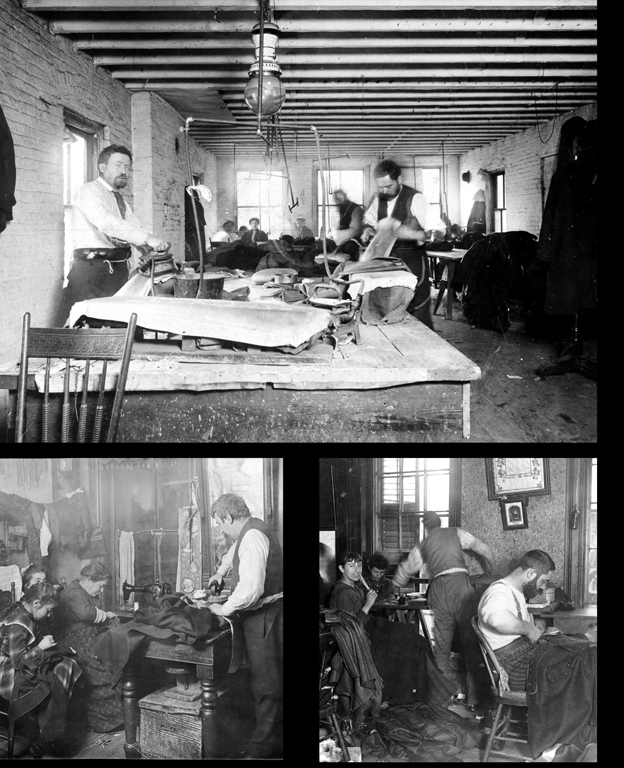The Skyscraper Museum is devoted to the study of high-rise building, past, present, and future. The Museum explores tall buildings as objects of design, products of technology, sites of construction, investments in real estate, and places of work and residence. This site will look better in a browser that supports web standards, but it is accessible to any browser or Internet device.
TENEMENTS AND SWEATSHOPS

Top: "Typical Shop in 1911, 362 Madison Street." Kheel Center, Cornell University.
Bottom left: Sweatshop in Elizabeth Street Tenement, New York, 1908. Library of Congress.
Bottom right: Sweatshop in Ludlow Street Tenement, New York, c. 1889. Library of Congress.
Most early ready-to-wear clothing was manufactured in tenement sweatshops where a clothing designer and distributor, referred to as a "manufacturer," delivered bundles of pre-cut fabric to contractors who operated small factories, generally staffed with family members and poor immigrants who came from the same region of Europe as the contractors. "Sweating" workers - operators sitting at sewing machines powered by foot treadles, trimmers, pressers, and others, including children, and usually the contractor himself - labored in unhealthy conditions for long hours in over-crowded firetraps, frequently sharing a tenement apartment with the contractor's family. Contractors paid their workers by the piece and the workers' low pay was barely enough to support families.
Some reformers advocated for the abolition of these sweatshops because of inhuman conditions, but many others were less concerned for worker's welfare. Rather, they feared that germs would breed in the garments made in such settings and spread diseases into wealthier neighborhoods. In 1892, New York State passed the a law limiting manufacturing in tenement apartments. This restrictive law forced the migration of tenement sweatshops into factory lofts, many located in old and deteriorated buildings. Many of these lofts were in fact little better than the tenements. Workers toiled for long hours without ventilation and with few if any sanitary facilities.
